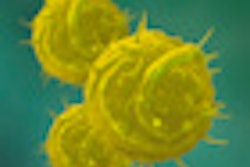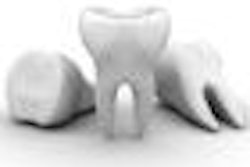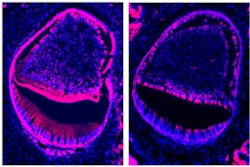Researchers at Tufts University School of Dental Medicine and Sackler School of Graduate Biomedical Sciences have developed complex, multilayer tissues that mimic human skin and the oral mucosa from human embryonic stem cells (hESC).
"For the first time, we have established that a single source of hESC that can provide the multiple cell types needed to interact within a three-dimensional tissue model to generate complex, multilayer tissues," said Jonathan Garlick, D.D.S., Ph.D., a professor of oral and maxillofacial pathology at Tufts, in a press release.
"Little is known about how hESC can be developed into the multilayer tissues similar to those that line the gums, cheeks, lips, and other areas in the mouth," he added. "We used in vitro tissue engineering techniques to produce skin-like tissues that mimic the lining tissues found in the oral cavity."
Using a combination of chemical nutrients and specialized surfaces for cell attachment, an hESC line (H9) was directed to form two distinct specialized cell populations. The first population forms the surface layer (ectodermal, the precursor to epithelial tissue), while the second is found beneath the surface layer (mesenchymal).
Following the isolation and characterization of these cell populations, the researchers incorporated them into an engineered, 3D tissue system where they were grown at an air-liquid interface to mimic their growth environment in the oral cavity. Within two weeks, tissues developed that were similar in structure to those constructed using mature cells derived from newborn skin, which are the current gold standard for tissue fabrication.
"These engineered tissues are remarkably similar to their human counterparts and can be used to address major concerns facing the field of stem cell biology that are related to their clinical use. We can now use these engineered tissues as 'tissue surrogates' to begin to predict how stable and safe hESC-derived cells will be after therapeutic transplantation," Dr. Garlick said. "Our goal is to produce functional tissues to treat oral and skin conditions, like the early stages of cancer and inflammatory disease, as well as to accelerate the healing of recalcitrant wounds."
Copyright © 2009 DrBicuspid.com



















